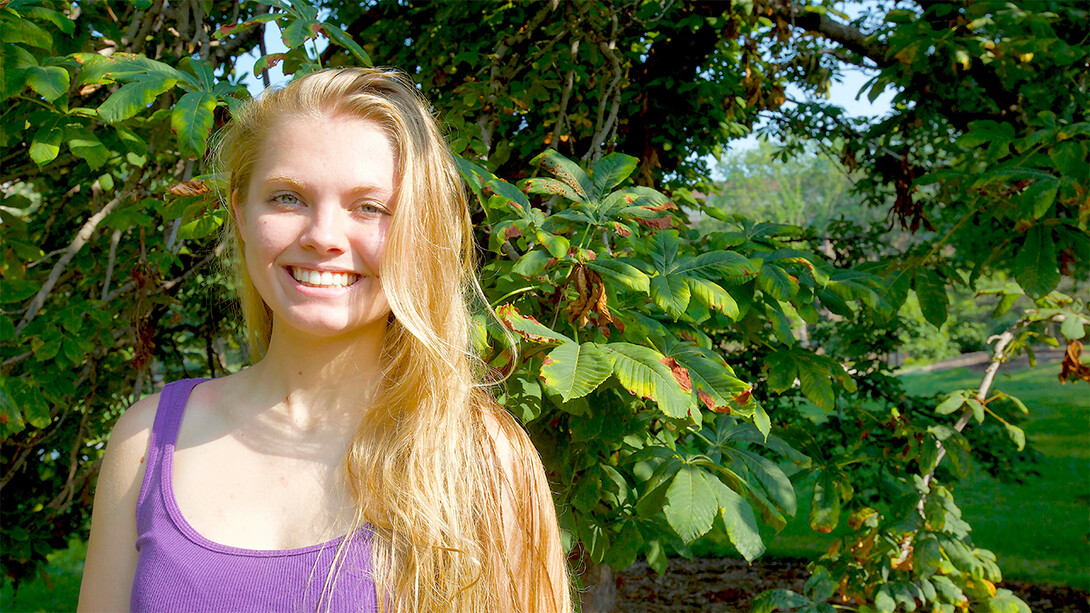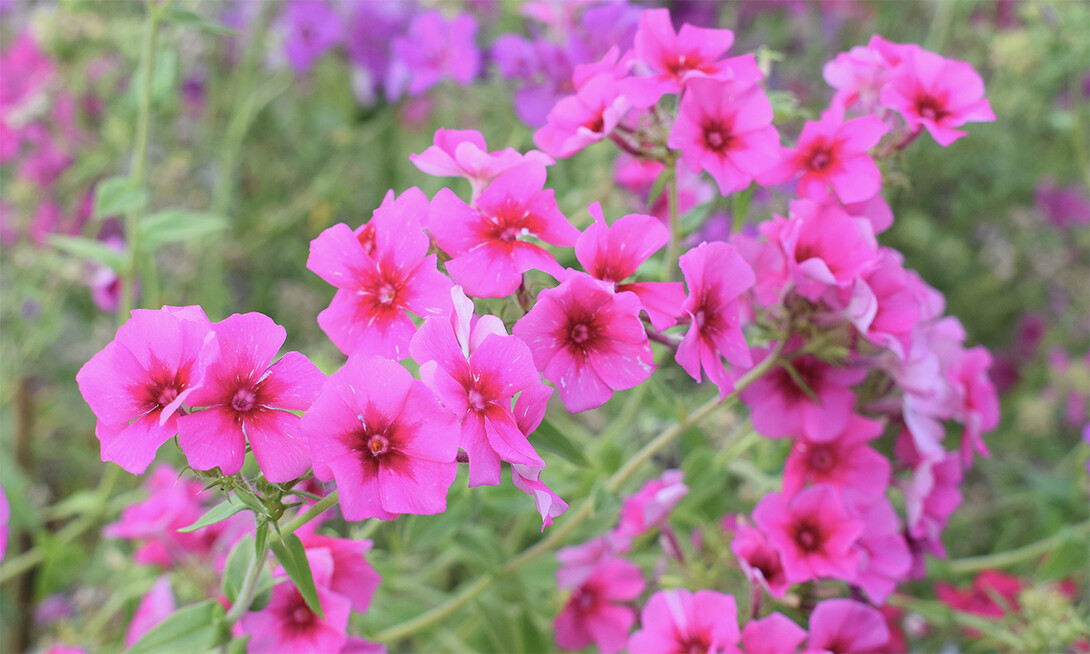
“I’ve always been driven to do more than what’s expected of me.”
Bridget Bickner says it modestly, but she means it. And her production this summer backs it up.
On track to graduate a semester early, the senior biological sciences major returned to Lincoln in August after spending 10 weeks in and around Boston. She visited the East Coast to take part in two prestigious research programs – simultaneously.
“A workload never intimidates me,” said the native of Colby, Kansas, who was already conducting research as part of the university’s UCARE program. “In Boston, I actually worked fewer hours than I normally do at Nebraska.”

Both of Bickner’s summer research experiences — a fellowship from the American Society of Plant Biologists and an internship with the Arnold Arboretum — had her working in the lab of Harvard University researcher Robin Hopkins. Her charge? Investigate the colorful mystery of the plant species Phlox drummondii. Whereas most of the 60-some species in the Phlox genus produce flowers of a single color, the blooms of P. drummondii can range from light blue to dark red.
Researchers have identified two genes involved in the phenomenon: one that codes for blue versus red, another for light versus dark. But the mere presence or absence of those genes does not dictate flower color, Bickner said. The answer instead lies in the cellular activities that effectively turn genes on and off.
To help determine what directs the flipping of those genetic switches, Bickner examined a swath of 2,000 base pairs — foundational components of DNA — directly in front of the blue-red gene.
“I was looking at what regions in those 2,000 base pairs are different between blue and red (flowers),” she said. “There’s some point in those 2,000 base pairs where something interesting (might be) happening. So I was chopping up this region into smaller chunks and then testing those.
“But it’s not quite that simple.”
Bickner had to test the smaller base-pair regions within the flower petals, where the natural cellular machinery could facilitate expression of the red-blue gene. That meant transforming the base-pair region in an E. coli bacterium, then implanting it in an agrobacterium before finally injecting that into P. drummondii petals.

Crafting the microbiological equivalent of a Russian nesting doll gave Bickner another crash course in the often unpredictable, sometimes frustrating nature of research.
“It’s about a three-week process when everything goes right, but it takes much longer when you can’t get your (bacterial) colonies to grow, and you don’t know why, or you’re getting too many to grow, and they’re not the right thing, and you don’t know why,” she said. “So there’s a lot of troubleshooting in there.”
Though her work represented just one piece of a much larger effort to understand the color-coding mechanisms of P. drummondii, Bickner did emerge from the lab experience with a tangible result. At her final presentation, she showed that injecting the base-pair region from a blue flower into a red one can turn the latter purplish after just two days.
“That’s very qualitative, but it’s something,” she said. “It indicates that these red flowers are likely capable of making blue pigment.”
When not toiling away in the lab, Bickner was decompressing at the Arnold Arboretum, a 280-acre National Historic Landmark that she described as a “walk through the evolutionary history of the different families of trees.” She also organized a night of pizza and swing-dancing in Cambridge that gave her a chance to bond with other interns.
“A lot of us weren’t from the Boston area, and it was good to have people just to hang out with in our free time,” Bickner said. “We were all scrambling to put together the pieces of our research questions, but we (looked for opportunities) to stop and just say, ‘How are you? Hi. What’s going on besides research?’”
Now back in Lincoln, Bickner is gearing up to finish an undergraduate thesis during her final semester even as she looks down the road. With eyes on grad school, she’s already prepping to take the GRE and apply for the National Science Foundation’s Graduate Research Fellowship.
“I’m finishing and beginning everything at the same time,” Bickner said.
She’s also bearing in mind the lessons she took from Hopkins and other researchers over the summer: lessons in how to get where they are, what to expect when she gets there, and how to balance the demands of a research career with a personal life.
“I’ve wanted to be a researcher since I was 10 years old,” Bickner said. “I have a pretty strong research background now, so I think I’m ready for it.”







